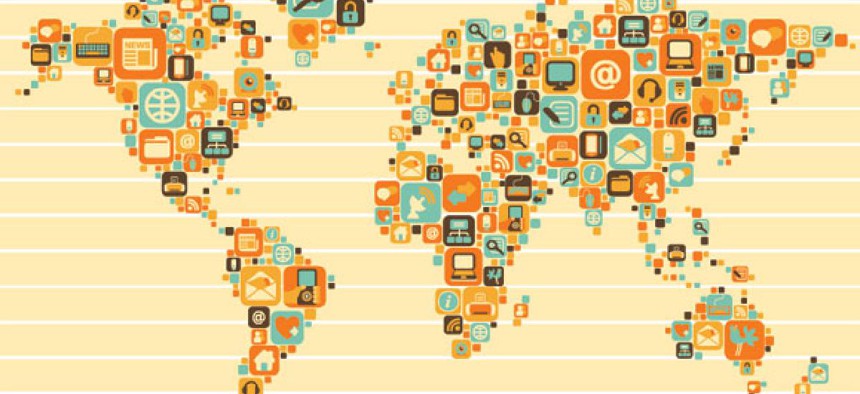State could make more effective use of e-diplomacy work

Evellean/Shutterstock.com
Brookings scholar cites inefficiencies in consular affairs, public diplomacy.
The State Department could expand its e-diplomacy initiative to improve policy planning and governmental outreach, according to a new report from the Brookings Institution.
Fergus Hanson, a nonresident fellow at Brookings, said the department’s e-diplomacy program, under which officials communicate directly with millions of people worldwide through social media, offers clear lessons for improving other elements of the department’s work, including consular affairs and disaster relief efforts. Hanson said the department had used social media technology effectively for Internet freedom advocacy and public diplomacy, but had resisted efforts to transform its more centralized, policy-related functions.
“While State is at the vanguard of e-diplomacy and well ahead of even its closest peers . . . it still lacks bureaucratic champions able to adapt State to the 21st century,” Hanson wrote.
Secretary of State Hillary Clinton and former State Department Director of Policy Planning Anne-Marie Slaughter have made e-diplomacy a key component of its 21st Century Statecraft initiative, embracing social media tools to promote foreign policy and national security interests. Hanson said one of the big successes has been the promotion of what he calls “diplo-media” -- content that serves a national interest, tends to be entertaining and is participatory in nature. He noted the daily flood of content has made the State Department one of the largest media conglomerates in the world.
“State now has a global reach approaching 15 million people on Facebook and Twitter alone and that reach remains on a very strong growth trajectory,” Hanson noted.
Hanson said the Internet had created relics of legislation like the 1948 Smith-Mundt Act, which prohibits domestic distribution of communications intended for foreign audiences. He said the result was duplicative spending within the department on Internet-based public communications, which often have the same content but are separated by servers and locations on government websites.
“Communications from both public affairs and public diplomacy also often overlap,” Hanson wrote.
“As technology continues to increase information flows and foreign ministry budgets continue to be squeezed, the ability to mobilize human and informational resources efficiently will only increase in importance,” Hanson wrote. “The interest State has received from the private sector indicates it is already ahead of the game in this space.”
(Image via Evellean/Shutterstock.com)






